These buoys get their names from the cardinal points of the compass, north, south, east and west.
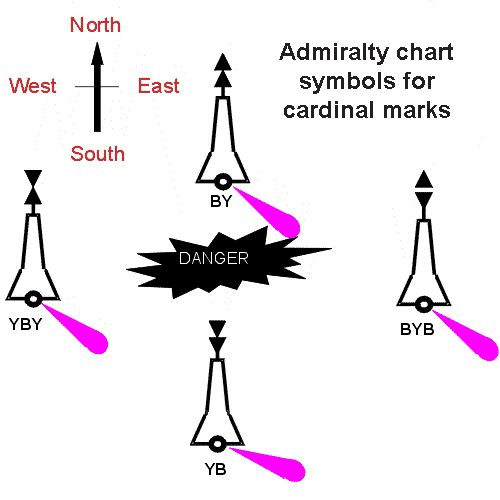
Cardinal buoys are positioned on the side of the danger that they are named for. E.g., A north cardinal is north of a danger. A south cardinal is south of the danger.
Shape All cardinal marks are pillar buoys so the shape alone will not help to identify one, but the topmark of a cardinal mark indicates its type. The north and south are easy to remember, but the east is roughly egg shaped, so it could be considered to be Easter egg shaped! The west mark is narrow in the middle and you could think that west is waisted! |
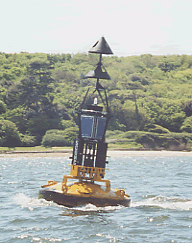 |
North cardinal mark. |
Colour Cardinal marks are all yellow and black. An identifying feature is that the points point towards the black part of the buoy. E.g. A north cardinal is black at the top and a west cardinal is black in the middle. |
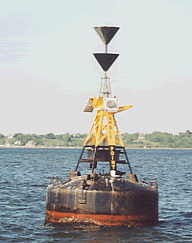 |
South cardinal mark. |
LightsCardinal buoys that are lit have a white light, and the sequence relates to a clock face. East cardinal VQ(3)5s or Q(3)10s (3 O'clock) West cardinal VQ(9)10s or Q(9)15s (9 O'clock) North cardinal VQ or Q. South cardinal VQ(6)+LFl10s or Q(6)+LFl15s (6 O'clock). South cardinal buoys have a long flash in addition to the 6 flashes because, when there is a large swell you may not see the entire sequence. This long flash helps differentiate between a south and a west buoy. |
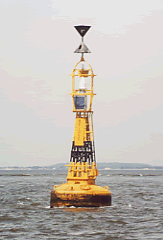 |
West cardinal mark. |
|
There are two possible sequences, so that if there are two similar buoys in an area, they will show different lights patterns. Although cardinal marks are represented with all four types marking a danger this is unusual. They will be mixed up with lateral marks so that it is easy to identify which buoy you are looking at. The only time when you will normally come across all four cardinal marks, is when there is a new danger, that has not been there long enough for charts to have been corrected. |
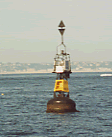 |
East cardinal mark. |

In rare situations where a new danger is considered to be a considerable hazard, two buoys of the same type may be temporarily positioned adjacent to one another.
On Chart 1, all four cardinal buoys are used to mark the Basse Trouvée (49°17'N 05°15'W). Although they are close on the chart, it is unlikely that you would see more than one at a time when sailing in this area as they are several miles apart.
Sailtrain.co.uk is free to use, but if you feel you would like to contribute to the running and development costs you can donate via Paypal:
Additional Resources:

